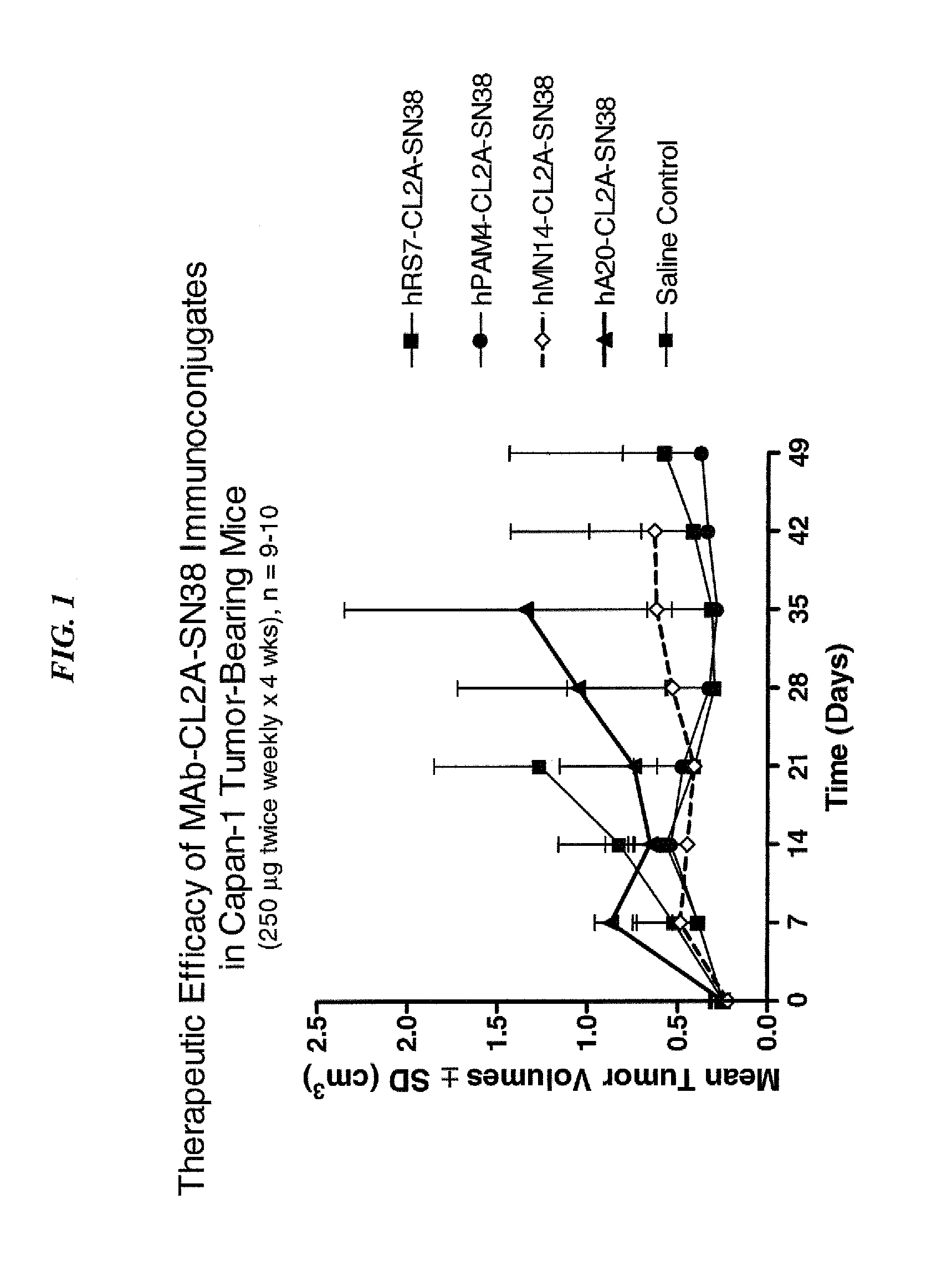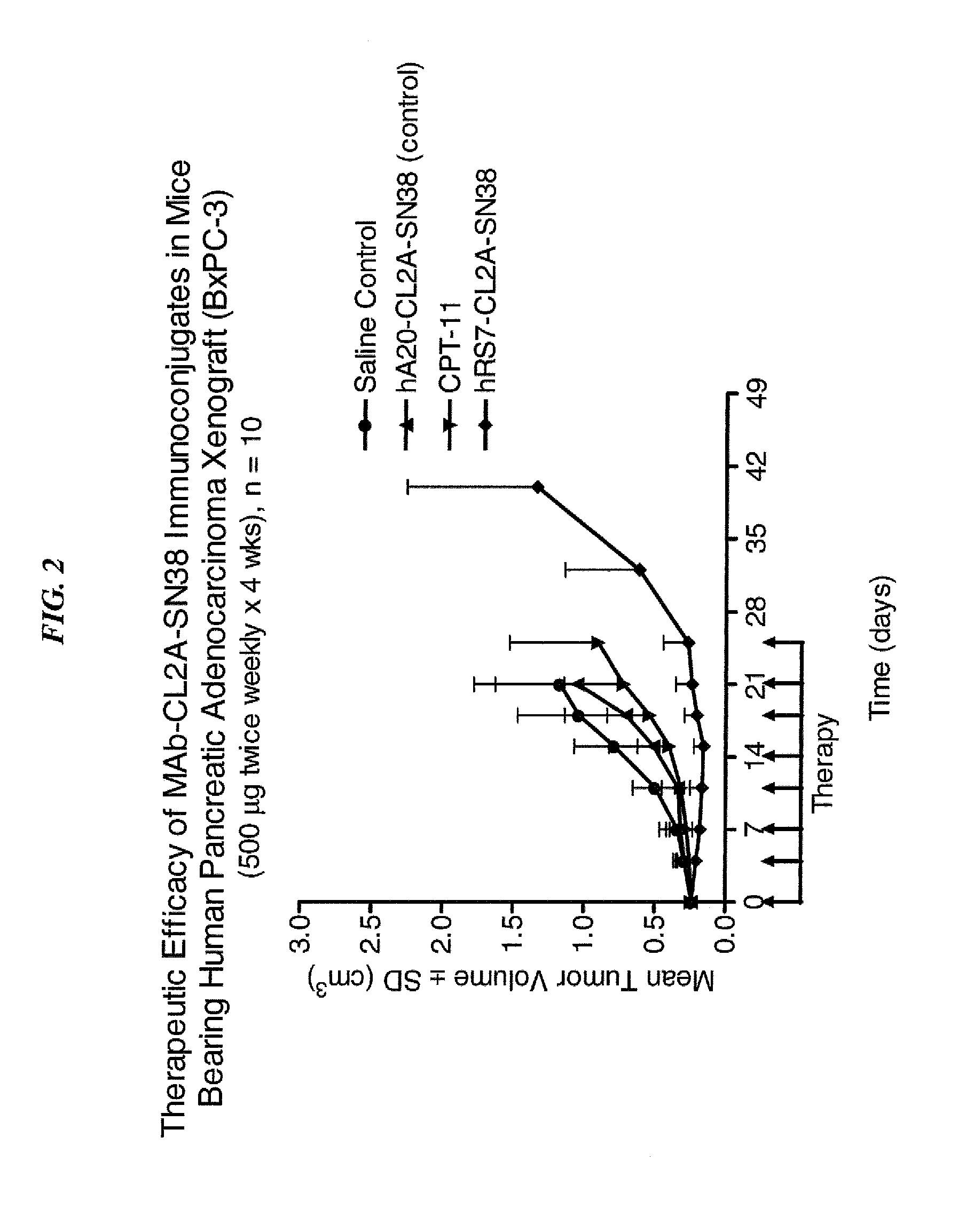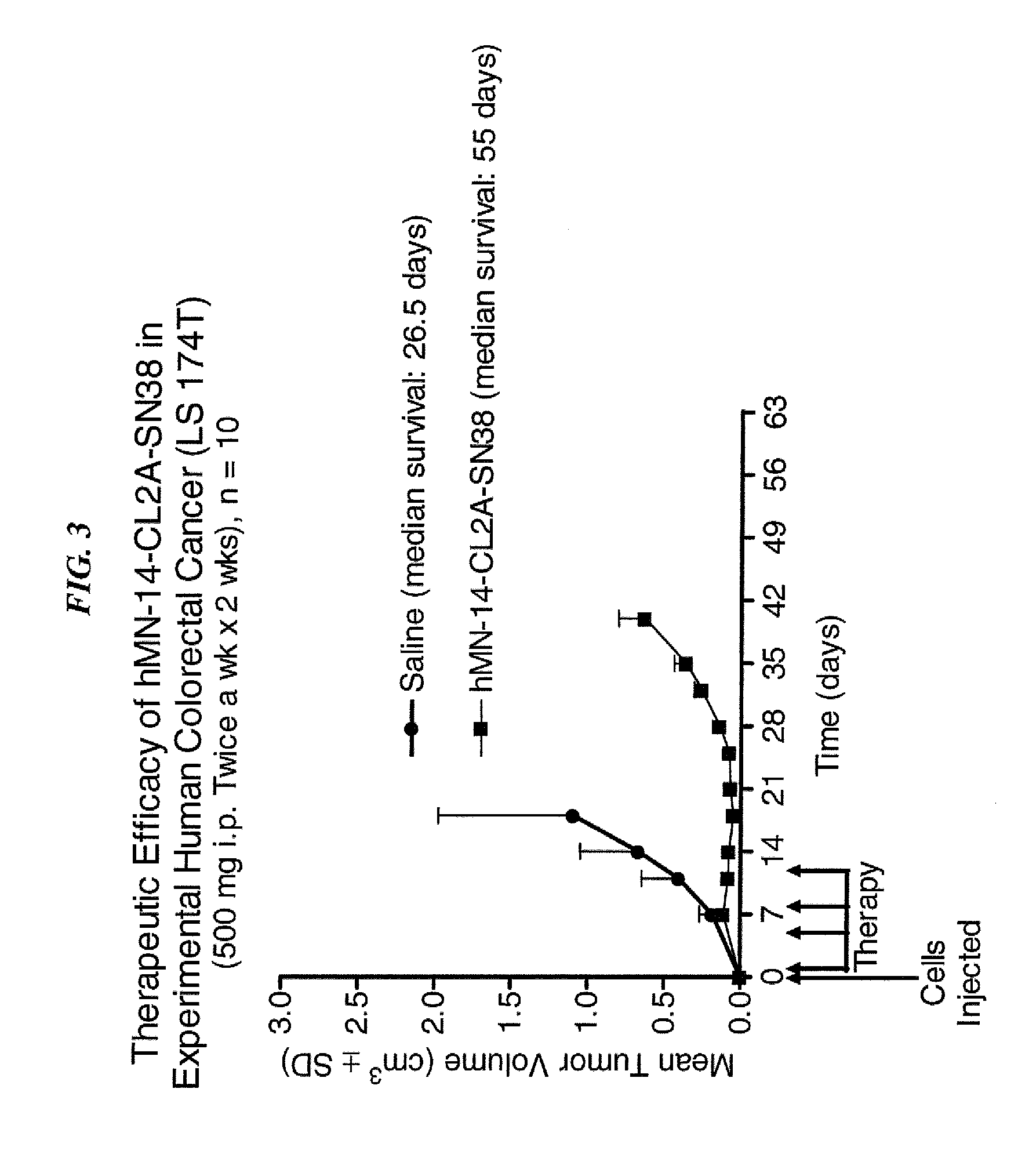Dosages of immunoconjugates of antibodies and SN-38 for improved efficacy and decreased toxicity
a technology of immunoconjugates and antibodies, applied in the field of vaccines of antibodies or antigen-binding antibody fragments, can solve problems such as reducing immunogenicity, and achieve the effects of improving targeting, overcoming tumors, and reducing immunogenicity
- Summary
- Abstract
- Description
- Claims
- Application Information
AI Technical Summary
Benefits of technology
Problems solved by technology
Method used
Image
Examples
example 1
Preparation of CL6-SN-38
[0251]CL6-SN-38 is represented in Scheme-1. Commercially available O-(2-azidoethyl)-O′—(N-diglycolyl-2-aminoethyl)heptaethyleneglycol (‘PEG-N3’; 227 mg) was activated with DCC (100 mg), NHS (56 mg), and a catalytic amount of DMAP in 10 mL of dichloromethane for 10 min. To this mixture was added L-valinol (46.3 mg), and the reaction mixture was stirred for 1 h at ambient temperature. Filtration, followed by solvent removal and flash chromatography yielded 214 mg of clear oily material. This intermediate (160 mg) was reacted with 10-O—BOC-SN-38-20-O-chloroformate, the latter generated from 10-O—BOC-SN-38 (123 mg) using triphosgene and DMAP. The coupling reaction was done in 4 mL of dichloromethane for 10 min, and the reaction mixture was purified by flash chromatography to obtain 130 mg (45% yield) of product as foamy material. HPLC: tR 11.80 min; electrospray mass spectrum: M+Na: m / z 1181.
[0252]The maleimide-containing acetylenic reagent, namely 4-(N-maleimido...
example 2
Preparation of CL7-SN-38
[0255]The synthesis is schematically shown in Scheme-2. L-Valinol (40 mg) was reacted with commercially available Fmoc-Lys(MMT)-OH (253 mg) and EEDQ (107 mg) in 10 mL of anhydrous dichloromethane at ambient temperature, under argon, for 3 h. Extractive work up followed by flash chromatography furnished the product Fmoc-Lys(MMT)-valinol as a pale yellow liquid (200 mg; ˜70% yield). HPLC: tR 14.38 min; electrospray mass spectrum: M+H: m / z 727. This intermediate (200 mg) was deprotected with diethylamine (10 mL), and the product (135 mg) was obtained in ˜90% purity after flash chromatography. HPLC: tR 10.91 min; electrospray mass spectrum: M+Na at m / z 527. This product (135 mg) was coupled with the commercially available O-(2-azidoethyl)-O′—(N-diglycolyl-2-aminoethyl)heptaethyleneglycol (‘PEG-N3’; 150 mg, 1.1 equiv.) in presence of EEDQ (72 mg, 1.1 equiv.) in 10 mL of dichloromethane, and stirred overnight at ambient temperature. The crude material was purified ...
example 3
Preparation of CL6-SN-38-10-O—CO2Et
[0259]The CL6-SN-38 of Example 1 (55.4 mg) was dissolved in dichloromethane (5 mL), and reacted with ethylchloroformate (13.1 mg; 11.5 μL) and diisopropylethylamine (52.5 mg; 71 μL), and stirred for 20 min under argon. The reaction mixture was diluted with 100 mL of dichloromethane, and washed with 100 mL each of 0.1 M HCl, half saturated sodium bicarbonate and brine, and dried. Flash chromatography, after solvent removal, furnished 59 mg of the title product. HPLC: tR 10.74 min; exact mass: calc. 1404.6457 (M+H) and 1426.6276 (M+Na). found: 1404.6464 (M+H) and 1426.6288 (M+Na).
PUM
 Login to View More
Login to View More Abstract
Description
Claims
Application Information
 Login to View More
Login to View More - R&D
- Intellectual Property
- Life Sciences
- Materials
- Tech Scout
- Unparalleled Data Quality
- Higher Quality Content
- 60% Fewer Hallucinations
Browse by: Latest US Patents, China's latest patents, Technical Efficacy Thesaurus, Application Domain, Technology Topic, Popular Technical Reports.
© 2025 PatSnap. All rights reserved.Legal|Privacy policy|Modern Slavery Act Transparency Statement|Sitemap|About US| Contact US: help@patsnap.com



